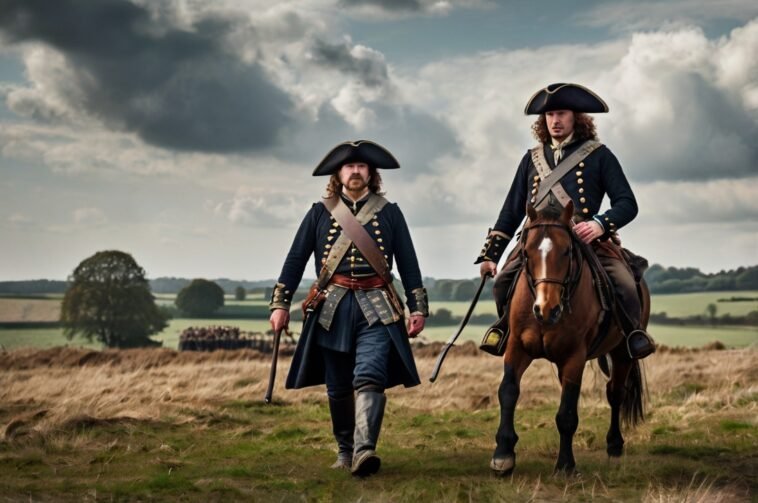
The 17th century was a transformative period in world history.
From political revolutions to scientific discoveries and cultural achievements, this era reshaped the course of human civilization.
It saw the rise and fall of empires, the emergence of new ideas in science and philosophy, and significant economic developments that laid the groundwork for the modern world.
In this article, we’ll explore some of the key events of the 17th century, their significance, and their lasting impact on history.
Political Revolutions and Shifts
The 17th century was marked by significant political upheavals, particularly in Europe.
Monarchies were challenged, governments were restructured, and new political ideologies emerged.
English civil war (1642–1651)
One of the most defining political conflicts of the century was the English Civil War, a series of battles between Parliamentarians (Roundheads) and Royalists (Cavaliers) over governance and religious freedom.
The war ended with the execution of King Charles I in 1649 and the establishment of the Commonwealth under Oliver Cromwell.
This conflict drastically changed the political landscape in England, weakening the monarchy and setting the stage for future parliamentary rule.
Glorious revolution (1688)
Later in the century, the Glorious Revolution of 1688 was a bloodless coup that saw the overthrow of King James II in favor of his daughter Mary and her husband, William of Orange.
This event solidified the transition from absolute monarchy to a constitutional monarchy in England, ensuring that Parliament would have a permanent role in government decision-making.
It also guaranteed more religious tolerance and political stability, influencing political thought in Europe and the Americas.
Rise of absolutism in Europe
While England was moving toward parliamentary government, many other European countries saw the rise of absolutism.
Monarchs like Louis XIV of France centralized power and ruled with absolute authority.
Louis XIV’s reign, known for the opulent Palace of Versailles, exemplified the height of absolute monarchy.
His motto, “L’État, c’est moi” (“I am the state”), symbolized the consolidation of power that defined much of 17th-century European governance.

Economic Developments and Global Trade
The 17th century witnessed the growth of global trade and the rise of powerful economic systems that shaped international relations and commerce.
Mercantilism
During the 17th century, mercantilism was the prevailing economic theory.
This system focused on increasing a nation’s wealth by controlling trade and accumulating precious metals like gold and silver.
Governments aimed to maximize their exports (goods sold to other countries) and minimize imports (goods bought from other countries).
This economic strategy influenced colonial policies, as European powers sought to dominate overseas markets and resources.
The era saw significant growth in colonial empires, particularly in the Americas, Asia, and Africa, as countries competed for control and wealth.
Age of exploration
The 17th century built on the explorations of the previous century with even more ambitious voyages.
European nations like Spain, Portugal, the Netherlands, and England expanded their reach, discovering new lands, establishing colonies, and opening up new trade routes.
This period was crucial for modern globalization, as it led to a massive exchange of goods, people, and ideas across continents.
The increased movement of trade and exploration laid the groundwork for the interconnected world we live in today.
The Dutch East India Company and the British East India Company
Two major players in global trade were the Dutch East India Company (VOC) and the British East India Company.
The Dutch East India Company, founded in 1602, and the British East India Company, established in 1600, became dominant forces in Asian trade, dealing in spices, textiles, and tea.
These companies did more than just trade; they also held political and military power, acting almost as extensions of their home governments.
The VOC, in particular, was groundbreaking as the world’s first multinational corporation and even issued shares of stock to investors, a precursor to today’s modern financial markets.

Scientific Revolution and Enlightenment
The 17th century was also a time of intellectual revolution, with groundbreaking discoveries in science and the birth of the Enlightenment—a philosophical movement emphasizing reason, liberty, and progress.
Key figures of the scientific rrevolution
The Scientific Revolution was a time of dramatic shifts in how we understand science and the universe.
It began in the late 16th century and reached its peak during the 17th century.
Key figures who played a crucial role include:
- Galileo Galilei: Known for his support of the heliocentric model, which proposed that the Earth orbits the Sun. His work sparked significant debate about science and religion.
- Johannes Kepler: Developed the laws of planetary motion, which described how planets move around the Sun.
- Isaac Newton: His groundbreaking work, Principia Mathematica (1687), laid out the laws of motion and universal gravitation.
- René Descartes: A philosopher and mathematician whose work emphasized the importance of reason and skepticism.
These pioneers challenged established beliefs and laid the groundwork for modern science, changing our understanding of the universe.
The enlightenment
Toward the end of the 17th century, the ideas of the Enlightenment began to take shape.
Thinkers like John Locke argued for the importance of individual rights, government by consent, and the separation of powers.
Locke’s ideas on natural rights—life, liberty, and property—became a cornerstone of modern political thought and influenced later democratic revolutions, including the American and French Revolutions.
Cultural and Artistic Movements
Cultural and artistic movements flourished during the 17th century, reflecting the changes happening across society.
Baroque art and music
Baroque art and music dominated the cultural landscape of the 17th century.
Known for its grandeur, drama, and attention to detail, Baroque art was represented by artists like Caravaggio and Rembrandt.
In music, composers like Johann Sebastian Bach and Antonio Vivaldi brought complexity and emotion to their works, creating some of the most enduring pieces of classical music.
The Baroque style captured the tension between religious devotion and the growing focus on human experience and expression.
The Golden Age of Spanish Literature
Spain experienced a literary golden age in the 17th century, with works that are still celebrated today.
Miguel de Cervantes, the author of Don Quixote (1605), is one of the most famous figures of this era.
His novel, often considered one of the first modern novels, explored themes of heroism, illusion, and reality.
Spanish playwrights like Lope de Vega and Calderón de la Barca also contributed to the flourishing of Spanish literature during this period.
The Emergence of Theater in England
In England, the 17th century saw the rise of theater as a major cultural force.
William Shakespeare, whose works bridged the late 16th and early 17th centuries, remains one of the most influential playwrights in history.
His plays, including Hamlet and Macbeth, explored timeless themes of power, love, betrayal, and human nature.
The growth of public theaters, like the Globe in London, made entertainment more accessible to a wider audience.

Final Thoughts
The 17th century was a time of great change and innovation in nearly every aspect of life.
Political upheavals reshaped governments, scientific discoveries revolutionized our understanding of the world, and cultural movements enriched human expression.
The events of this century laid the foundation for the modern era, influencing everything from global trade and politics to art and philosophy.


